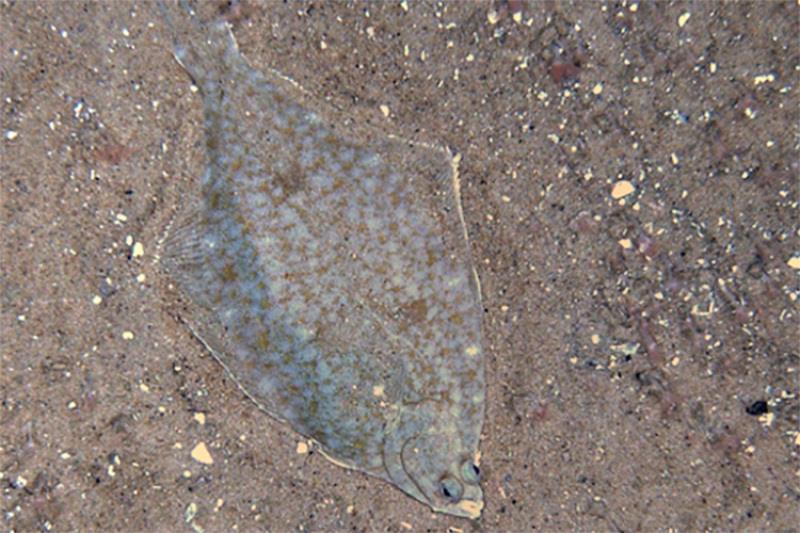
Ocean models help link environmental conditions to a Fishery Stock assessment
by NOAA Fisheries 1 Aug 2022 13:59 UTC

Yellowtail flounder on a sandy bottom photographed by a towed sampling array called HabCam © Woods Hole Oceanographic Institution
We are one step closer to using ocean and climate information to improve stock assessments and management measures.
NOAA scientists used ocean models to develop more detailed information about a seasonal, offshore cold-water mass called the "cold pool." They helped unlock a mystery: why have yellowtail flounder off southern New England and the Mid-Atlantic not rebounded despite nearly 30 years of recovery efforts?
They have linked fluctuations in this oceanographic phenomenon, the "cold pool," to fluctuations in numbers of new, young fish entering this hard-pressed stock. Further, they show that incorporating this new information into the stock assessment improves the results. It reduces the uncertainty around estimates of spawning stock and incoming numbers of young fish (called "recruitment"). These are important indicators for fishery managers developing measures to promote recovery.
"Although there is still a long way to go, our study constitutes a new step toward climate-ready fisheries management," said lead author Hubert du Pontavice. Du Pontavice is a post-doctoral research associate at the Program in Atmospheric and Oceanic Sciences at Princeton University and is affiliated with NOAA's Northeast Fisheries Science Center. The study was published recently in the ICES Journal of Marine Science.
Co-author Vincent Saba explains that the results showed "a cooler and more persistent cold pool is associated with higher recruitment into this yellowtail population." Saba is a Northeast Fisheries Science Center fishery biologist, who works at the Geophysical Fluid Dynamics Laboratory at Princeton University.
The most recent stock assessment update for this stock identified recruitment failure as a grave concern. It said that "Should this pattern of poor recruitment continue into the future, the ability of the stock to recover could be compromised." Researchers recommended further investigation of some of the underlying ecological mechanisms of poor recruitment, including the cold pool and Gulf Stream, to better understand future prospects for the stock.
To make the connection between cold pool dynamics and recruitment, the researchers first used ocean models to better characterize the cold pool from 1972 to 2019. Then, they linked the resulting information to variations in the number of 1-year-old fish coming into the population in each of those years. Finally, they added this information into a number of stock assessment models for this stock to test what happened when environmental conditions were included in the analysis.
Describing the Cold Pool
During summer and fall, a layer of cold water is trapped on the ocean bottom over parts of the continental shelf from Cape Cod, Massachusetts, to Cape Hatteras, North Carolina. Just how cold, how large, and for how long the cold pool persists varies throughout the season and among years.
Researchers already knew that the cold pool likely affected the survival of newly spawned yellowtail. Yellowtail eggs float on the ocean's surface for about 2 months after they are spawned in the spring, then settle into the cold pool if it is present, to feed and grow. To directly compare cold pool characteristics and recruitment over time, researchers needed a full series of data on cold pool variation over time.
To get this time series, the scientists developed three new indices to measure the cold pool: size, duration, and magnitude (temperature). Accounting for the fluctuations of the cold pool is challenging in part because researchers generally do so using ocean bottom temperatures measured directly, usually during at-sea ecosystem surveys. These surveys do not occur year-round, and they can be interrupted for various reasons, leaving data gaps.
To supplement the data obtained during surveys, these researchers used two estimates of monthly bottom temperature for 1972 to 2019. This is the same time frame covered by the most recent assessment for this stock. The estimates were generated using ocean models that can assimilate observed temperature data and fill in missing data.
"Ocean models can help fill in the gaps when observations are limited. They can produce daily cold pool indices, which is not possible using only observations," explains Saba.
Linking to Stock Assessments
The researchers then tested what happened when the cold pool effects on recruitment were incorporated into estimates of spawning stock size and recruitment.
Colleagues Tim Miller and Brian Stock helped incorporate the cold pool effects into a new stock assessment model they developed that can account for environmental factors. When cold pool effects on yellowtail flounder recruitment were included, estimates for the most recent years and for projections of future recruitment and spawning stock biomass became more certain. The assessment models performed better when only the observation-based index was used. "This work is an important step in improving our understanding of climate drivers on the productivity of fish stocks," said Miller.
While this study focused on cold pool effects on yellowtail flounder, it paves the way for factoring other environmental data into stock assessments. NOAA scientists are using the same assessment tools to investigate effects of environmental factors on other fish species at various life stages, and availability of the fish to our surveys. Researchers plan to use these tools to study other types of temperature effects on stocks such as American plaice, winter flounder, and Atlantic cod.